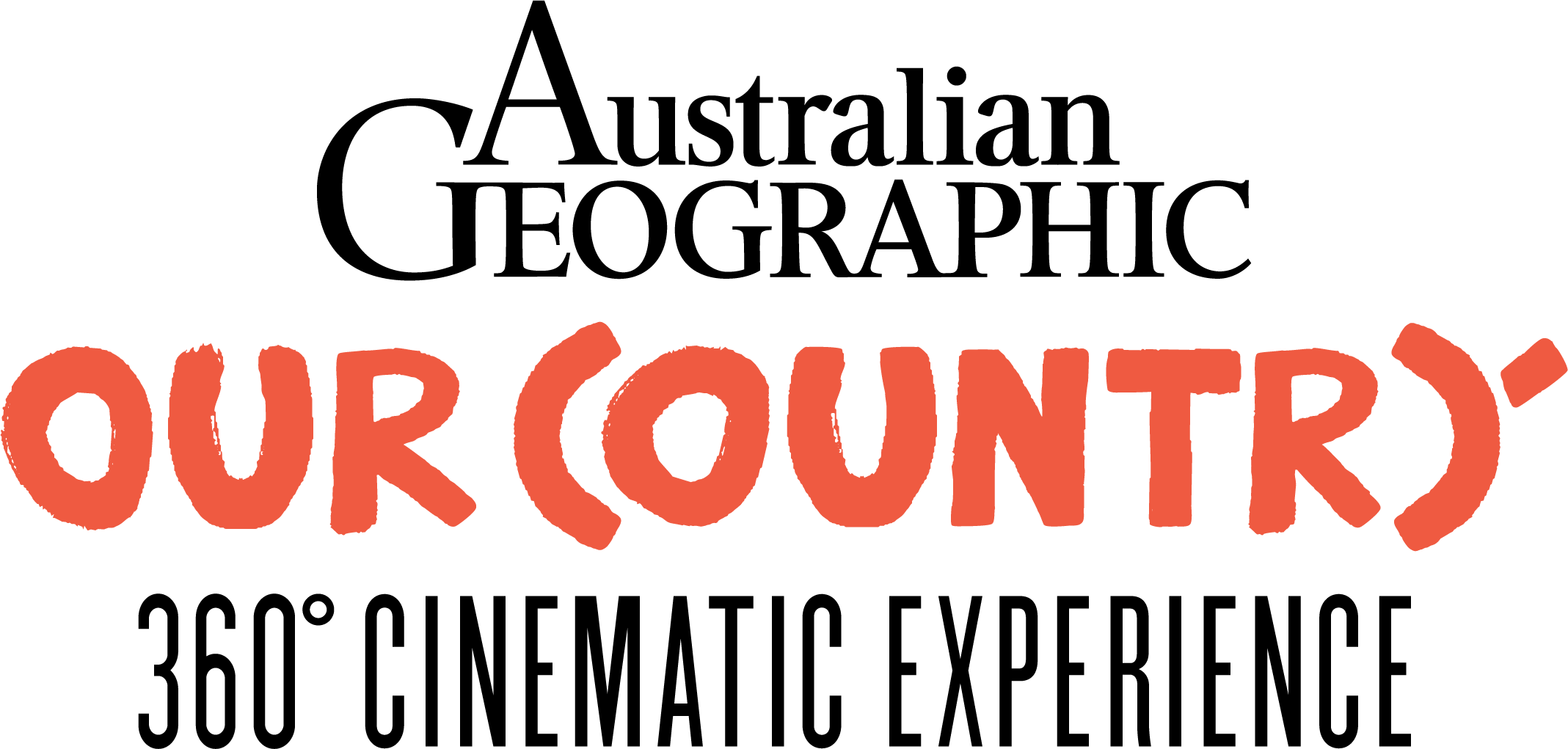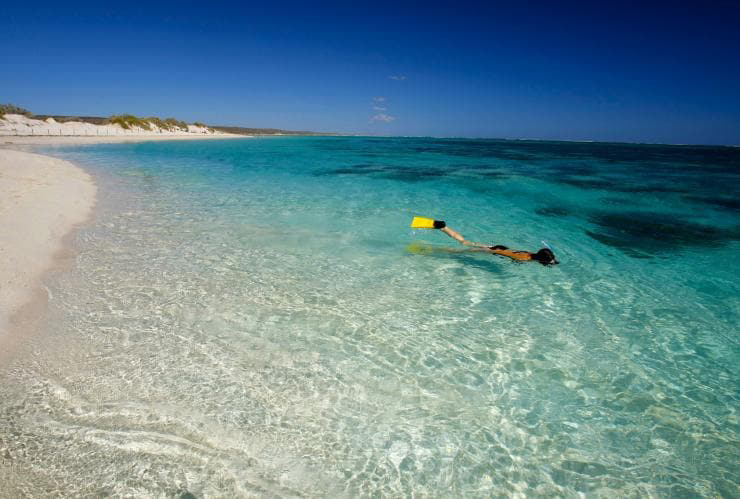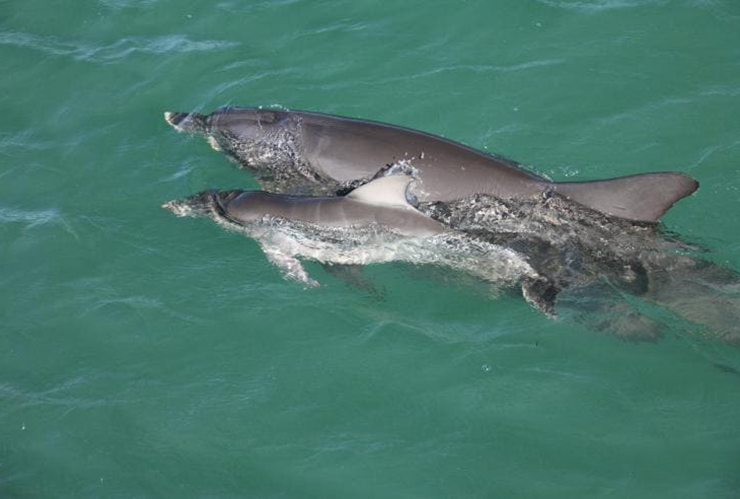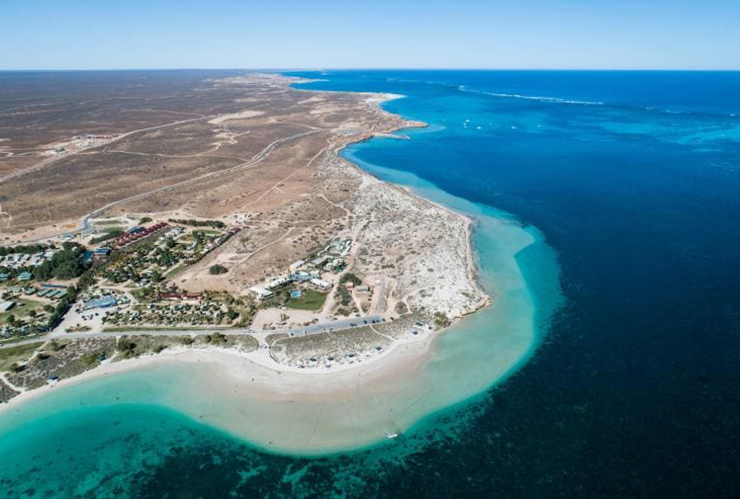
Travel Ningaloo – Ningaloo’s Reef Encounter
Words: Justin Gilligan | Feature image: Justin Gilligan
Where the desert meets the sea, there’s an elegant stretch of reef where giants come to play.
Located in Australia’s remote west, Ningaloo Reef offers a glorious, sparkling, thriving contrast to the dry, dusty landscape that adjoins it.
It also offers some of the world’s most amazing and spellbinding reef and marine-wildlife experiences. And the great news is that it’s relatively easy and cheap to access – once you get there.
Unlike the Great Barrier Reef, which is a complex mosaic of more than 2900 individual coral reefs spread across a wide continental shelf, Ningaloo is a single uninterrupted reef that stretches for 300km from Exmouth Gulf in the north to Red Bluff, near Carnarvon, in the south. One of the world’s longest fringing reefs, it’s protected by the 2435 sq.km Ningaloo Marine Park. Thanks to the absence of significant human pressures, the reef and surrounding waters are home to countless animals and plants, and in 2011 its protection was further enhanced when it received World Heritage listing as part of the 6045 sq.km Ningaloo Coast World Heritage Area, partly in recognition of the abundance, diversity and uniqueness of the reef’s biological wonders, and the role that it plays in ensuring the health of a number of important species.
I’m filled to bursting with anticipation as I sit on the duckboard at the stern of Ningaloo Marine Interactions’ vessel Utopia, my fins dragging through the water. The skipper, Frazer McGregor, gives me the okay and I slip into the warm, crystalline sea. And there, below me, cruising in mid-water, is a 3.5 m tiger shark. My heart beats hard in my chest as I watch the sleek, majestic fish, Ningaloo’s apex predator, continue about its business, apparently unconcerned by my awe-struck presence.
Nowhere else in Australia can you consistently swim with a tiger shark on a tour. These interactions, which typically take place on a shallow coral reef, with no bait in the water, grew organically out of a research project that was being undertaken by a friend of Frazer’s, who was trying to work out how many tigers were in the area, and when exactly they visited.
“We were trying to get some biopsy tissue samples and tag a few with acoustic tags, and we realised that it was actually quite difficult to get near them”, says Frazer. “You could get a good look at them, but they weren’t turning and coming back. We started putting a photographer in the water and then gradually we put in passengers who were keen. Now we’re at the point where we’ll try to get everyone on the boat in with the tiger sharks”, he continues. “We watch the sharks closely to make sure they aren’t behaving erratically, and the water also needs to be clear. Fortunately, here in Coral Bay, the water’s always clear, so our chances of getting a look are really pretty good”.
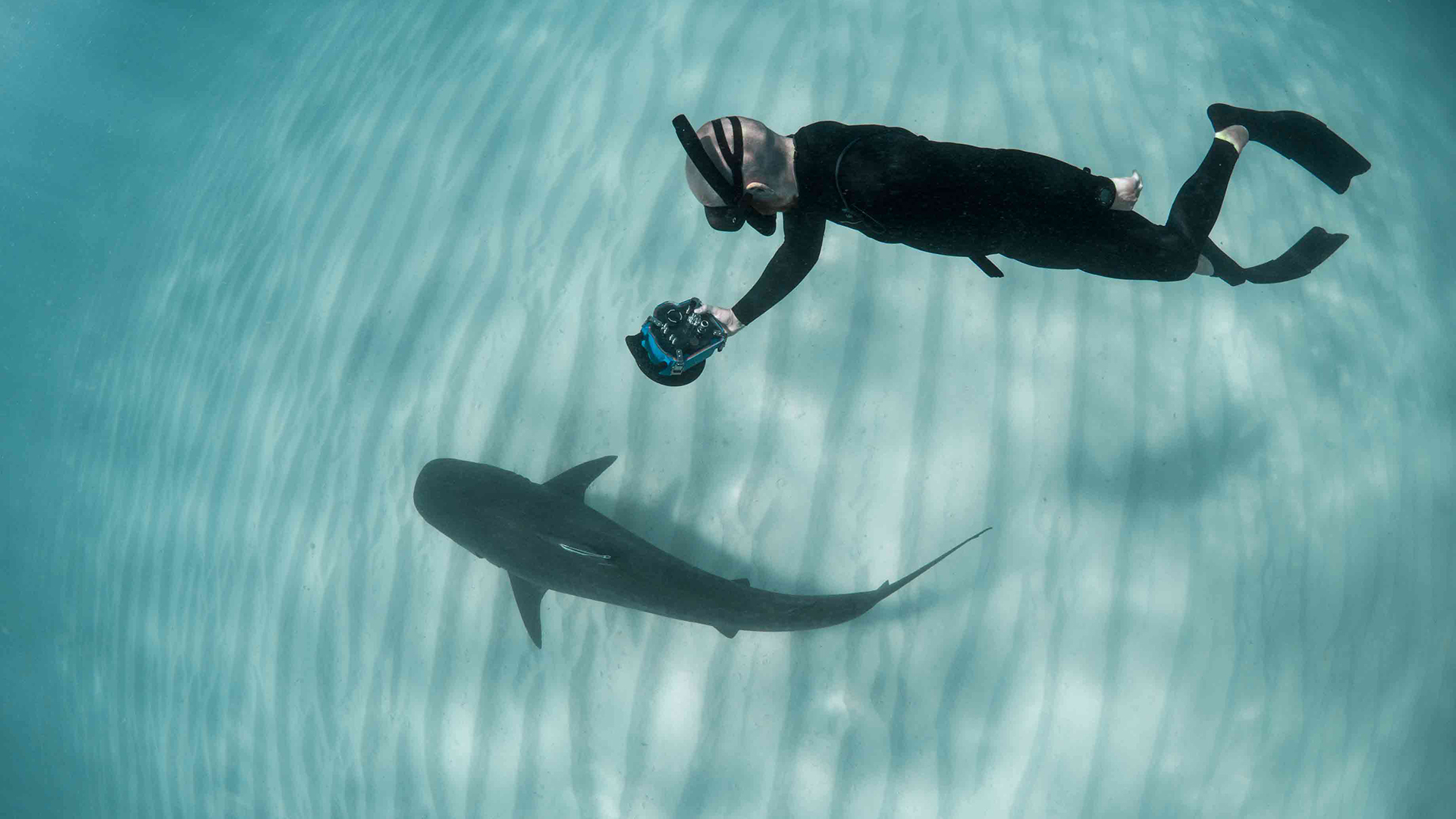
A close encounter with a shark can be a life-changing experience for many. Image credit: Justin Gilligan
Frazer says it’s rewarding getting people back on the boat after a tiger shark experience. “We can change their perceptions”, he says. “A lot of people leave our boat educated about how little danger sharks actually pose to people, which is fantastic”.
However, the tiger shark encounters are the ‘icing on the cake’ for Frazer – he’s much more likely to be found putting passengers into the water with another of Ningaloo’s large marine inhabitants, the majestic manta ray, one of almost 120 ray species found on the reef. Coral Bay is home to a large resident population of reef mantas, which ‘fly’ around the reef with weightless grace on tapered ‘wings’ that can have a total span of up to 5 m. “I remember people saying that we were swimming with the same manta over and over but I wasn’t sure, so back in 2003, I started taking pictures of the unique spot patterns on their underside and realised there were many more than we thought”, Frazer tells me. “We now have more than 1000 in our catalogue and it’s exciting that our customers can continue to help us with this research by submitting their own photos”.
But, incredibly, even mantas aren’t Ningaloo’s main marine calling card. That accolade goes to one of the ocean’s true behemoths, the whale shark. The reef is renowned as one of the best places in the world to encounter the largest fish in the sea. Growing up to 12 m in length with a life span of 70 years, the sharks visit Ningaloo in their hundreds between March and August each year to feed on coral spawn and zooplankton. Unsurprisingly, they’re a huge tourist drawcard, and 15 different operators offer whale shark tours from Exmouth and Coral Bay, most using spotter planes to locate them on the surface.
A face-to-face encounter with a whale shark is an unforgettable experience. Slowly materialising out of the blue like a bus emerging from fog, a broad, blunt head split by a gaping mouth filled with tiny teeth gives way to a ridged body decorated in an intricate pattern of dots and lines that gives the impression that this gargantuan fish has just swum out of a Dreaming painting. The massive vertical tail fin slowly sweeps from side to side, propelling the magnificent creature through the water with effortless grace.
Ningaloo also boasts an impressive contingent of charismatic marine mammals, including dugongs and as many as 20 cetacean species. Among the more commonly encountered residents are bottlenose dolphins, while orcas and humpback whales are seasonal visitors.
The humpbacks can be seen each year between June and November as they make their annual 11,000 km round trip along the so-called Humpback Highway between their Antarctic feeding grounds and their breeding and nursery grounds off the Kimberley coast.
During this time, Ningaloo plays host to the highest number in the Southern Hemisphere, with as many as 30,000 individuals making the mighty migration – many of them stopping off in and around Exmouth Gulf to rest up before heading south, particularly mothers with newborn calves to look after.
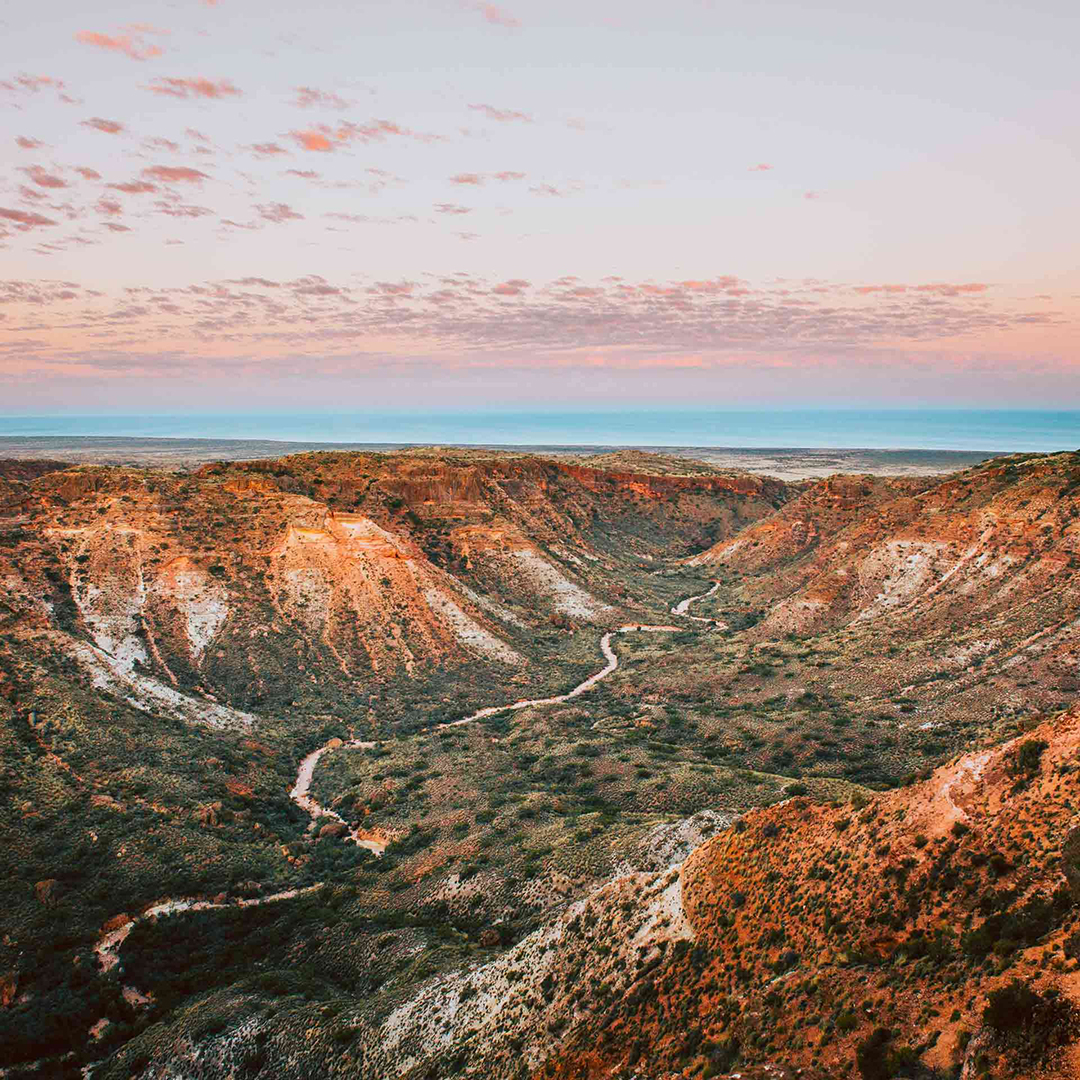
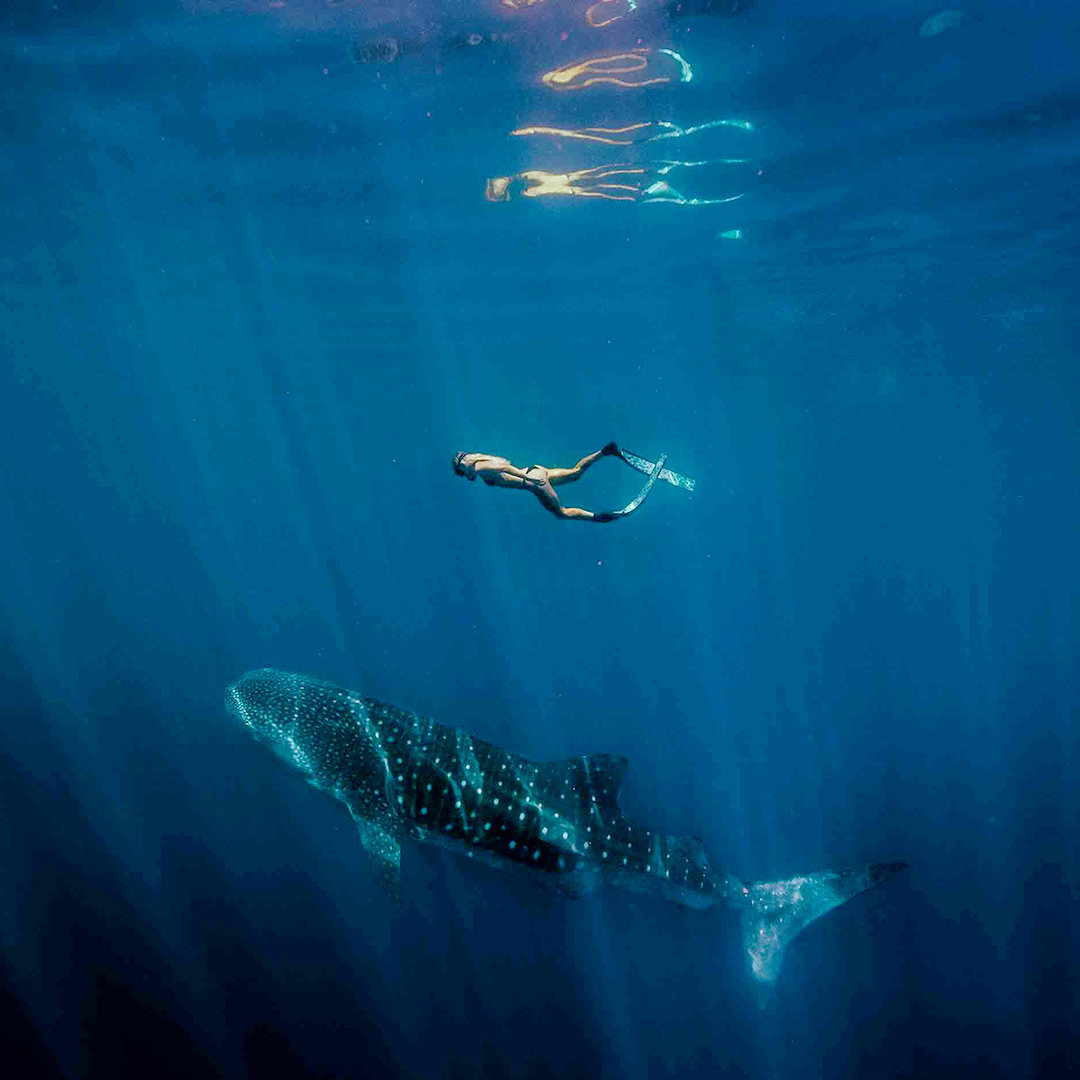
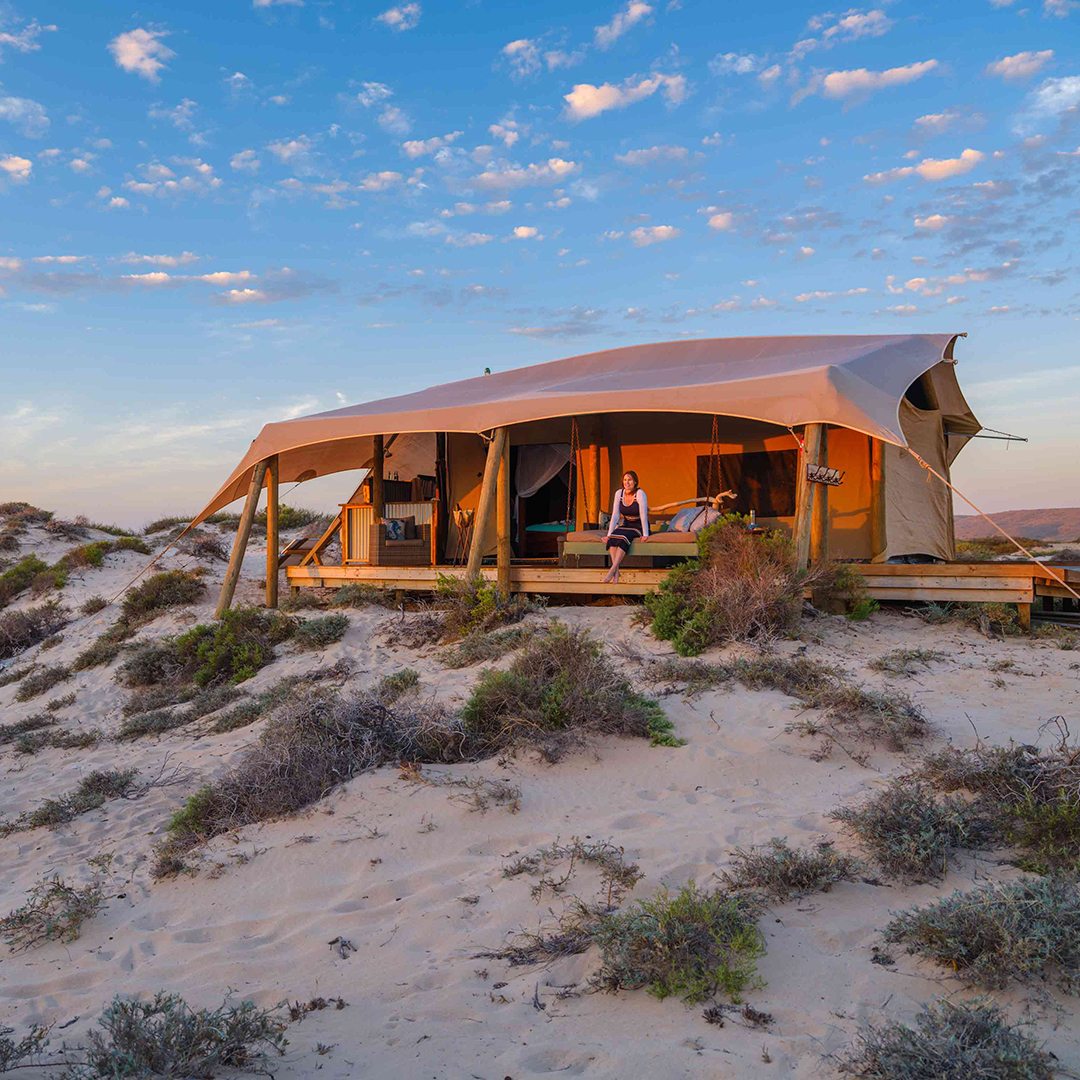
Image credits: Tourism Western Australia
The whales can often be seen from the shore, but for a true close encounter, you need to take to the sea. Among the operators that offer swim-with-whales tours at the height of the season is Exmouth-based Three Islands Whale Shark Dive. “We already had the infrastructure in place, such as the spotter planes, and experience with dropping people in the water with experienced guides, so it was just a matter of adapting what we do with the whale sharks to allow for the size and speed of the humpbacks, which are on the move – migrating rather than feeding”, explains Michael Husband, the company’s managing director.
“They’re just so big. We stay 30 m away, but the whales are calling the shots and often cruise past close to the boat with their pectoral flippers extended. We’ve had people get in the boat in tears. Often, our guests come from the city, so swimming in the open ocean with whales isn’t normal for them – it’s different from having a swim at the beach – and it takes them a little while to get their head around what has just happened”. Ningaloo Reef isn’t just about the giants of the deep. This watery wonderland plays host to an incredible diversity of marine life; Ningaloo Marine Park sits in seventh position on the world’s list of coral reef biodiversity hotspots and is placed second with regards to the number of species found within a limited range. Among its underwater inhabitants are more than 700 species of fish, 300 types of coral, roughly 650 different molluscs, about 600 crustaceans and more than 1000 species of marine algae.
Six of the world’s seven species of sea turtle also call these waters home, with green, loggerhead and hawksbill turtles most commonly encountered. The reef is both a feeding ground and habitat for the turtles, while the adjacent beaches are critically important nesting sites between November and February – an estimated 10,000 nests are built along the coast annually, with hatchlings emerging from January to March.
And although Ningaloo offers awesome diving, you don’t have to be certified to enjoy its pleasures. Unlike most of Australia’s coral networks, which are well offshore, Ningaloo Reef is accessible straight from the blinding-white beaches – in some areas only 100 m from shore – so it’s the ultimate snorkelling playground. The reef protects a crystal-clear lagoon that averages a mere 2-4 m deep and is incredibly rich in marine life.
Snorkelling sites pepper the lagoon, including an endless array of do-it-yourself beach sites such as Oyster Stacks in Exmouth, which is so shallow it can only be snorkelled at high tide and Bill’s Bay, located at the end of the Robinson Street in Coral Bay, where fish-filled coral gardens lie a very brief swim from the beach.
And even if you can’t be bothered to swim, you can try drift snorkelling in Turquoise Bay, 63 km north of Exmouth, where a gentle current pushes you over ever-changing coral scenery.
Ningaloo is one of Australia’s true tourism jewels, a unique combination of spectacular scenery and incredible biodiversity, where visitors are pretty much guaranteed to enjoy encounters with some of the world’s most impressive and elusive marine creatures. And it’s a place where passionate and dedicated conservationists and tour guides work to make sure that those intimate encounters are as much for the animals as they are for us.
“After a day on Ningaloo Reef, people walk away with a take-home conservation message,” Michael says. “You can go to a zoo or an aquarium and it’s all very nice, but with our tours, you’re up close and personal in the animals’ world, and our customers go away feeling good about the experience.
“Ningaloo is a very special place; we’re so lucky to have it in our backyard”.
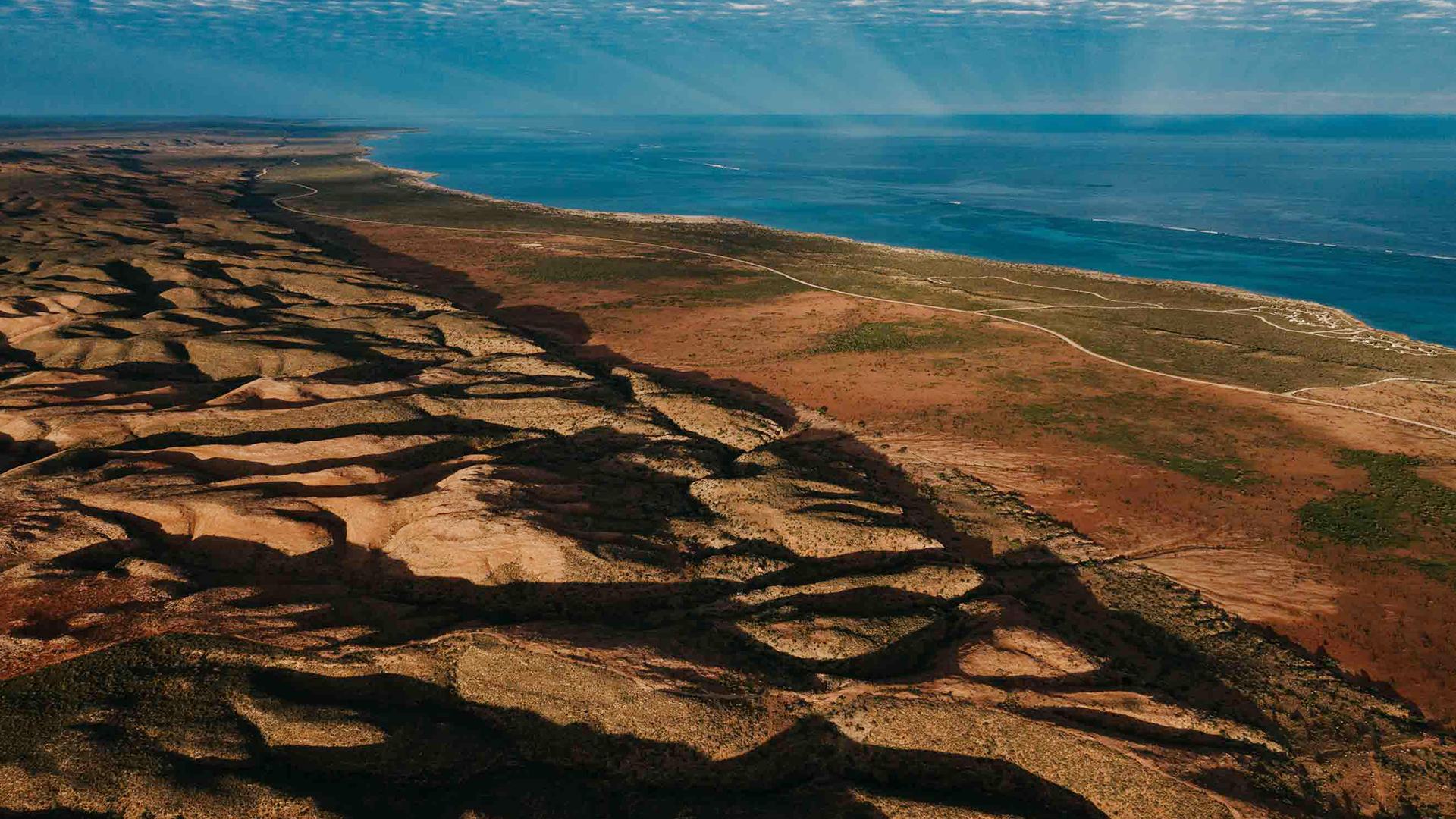
The spectacular contrasting scenery of WA’s Ningaloo Coast World Heritage Area. Image credit: Tourism Western Australia
How to Explore Ningaloo
Fringed by the burnished sand of Cape Range National Park, the warm, clear turquoise lagoons of Ningaloo Reef are a popular playground for some marvellous marine creatures.
The reef is UNESCO World Heritage- listed, and is the base for some of the very best wildlife encounters anywhere on the planet.
Ningaloo’s most lauded visitors are whale sharks – it has one of the world’s largest aggregations – and visitors can swim with them throughout the winter months.
You’ll also encounter manta rays, turtles and even humpback whales during their long annual migration.
THE ESSENTIALS
WHERE: Ningaloo Reef, on WA’s stunning Coral Coast, is 1200 km north of Perth.
WHEN: Most visit between autumn and spring but there’s plenty to see all year round.
HOW: A two-hour flight from Perth to Exmouth is less arduous than the 14-hour drive from Perth, but the road itself is an attraction, with some spectacular views. Travel by coach takes 18 hours.
DON’T MISS: Swimming with whale sharks and manta rays.
